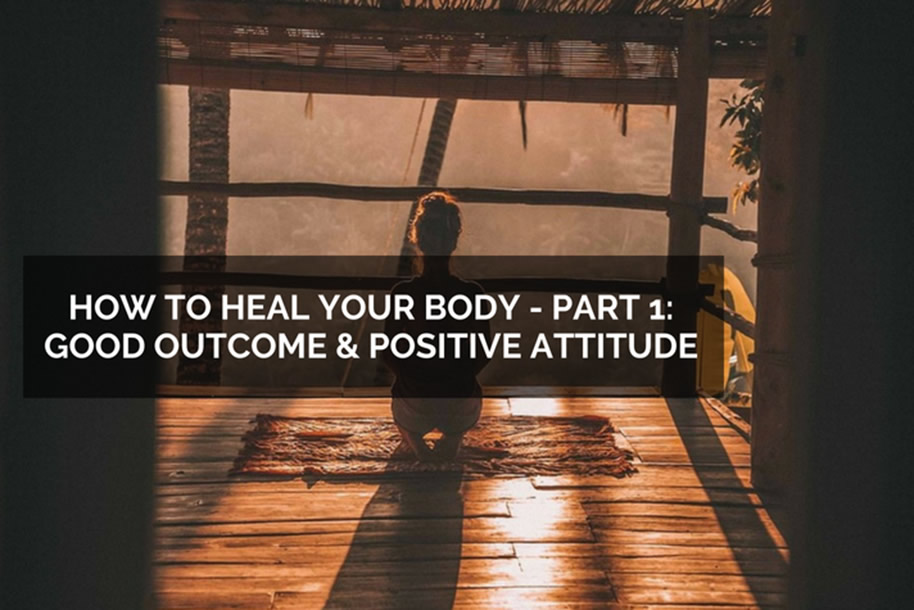 At Effortless Superhuman we believe that the body can heal itself from disease, pain and injury, as long as the barriers to healing are removed. Even making a single positive change can help you overcome your pain and dysfunction and enhance the outcomes from your treatments.
At Effortless Superhuman we believe that the body can heal itself from disease, pain and injury, as long as the barriers to healing are removed. Even making a single positive change can help you overcome your pain and dysfunction and enhance the outcomes from your treatments.
If you are suffering from an intense pain, you may need immediate attention and thus not be able to complete this list. However, during your treatment, you can continue to assist the healing process by following each step in the process.
These are the Secret Strategies that can help your body heal itself!
1. Define your “Good Outcome”
Defining your good outcome is the first step in actively participating in your treatment process. If a therapist is treating you, the very first thing you should discuss with them should be what your ‘good outcome’ is. Be precise and tell them exactly how they can help and exactly what they can do to make this a positive experience.
These are some questions to consider asking yourself and your therapist:
- Would you consider a 25% reduction in your pain a good outcome?
- Do you want to know how to prevent the pain from returning in the future?
- Have you had scans taken, and you want the therapist to explain what those scans mean?
- Do you want the therapist to explain what the contributing factors are to your pain or dysfunction?
- Do you want your therapist to look through your exercise training plan to see if any of the exercises are contributing to your pain or dysfunction?
Most ‘Good Outcomes’ will involve alleviating your symptoms so that you can return to sport or activity and get the ‘good feelings’ that come with being active, moving your body and socializing. Although these three components (Alleviate symptoms/Improve Function/Positive Emotions) are consistent with most patients, it is very important that you take the time to write your own Good Outcome down using language that clearly articulates your unique treatment goals.
How powerful is that!

Everyone’s ‘Good Outcome’ is unique. As the client, it’s your responsibility to convey your ‘Good Outcome’ to your therapist. If the treating therapist has your good outcome in mind throughout, the outcome of the treatment will be more positive.
2. Ensure that you are highly motivated to achieve your ‘Good Outcome.’
There is significant evidence suggesting that when clients are actively involved in their treatment process, the success of those treatments is substantially greater.
So, how motivated are you to achieve your good outcome on a scale of 1 to 10?

I want to work with highly motivated clients who are interested in achieving their good outcome and committed to making the necessary changes. I simply don’t work with people who don’t answer 8-10 for this question.
If you tell yourself (and your therapist) these things, then most likely you’re not motivated enough to achieve your good outcome:
- I was too busy to perform the one exercise you gave me to do
- I am not willing to stop training while we go through the healing process
- I took anti-inflammatory medication last night, so I already feel better
- I am not willing to cut out processed foods from my diet
- The last two therapists I saw couldn’t help me, so I doubt you’ll be able to either
These excuses impede the healing process. The likelihood of a successful outcome is significantly reduced if you’re not willing to participate and you’re not committed to the healing process.
Overcoming pain and dysfunction requires a team effort. At the centre of that team is you, the client. I have made it a rule that if a client gives 25%, then I give 25%. If the client is willing to participate 100% then I too will give 100% effort. So, before you seek the advice of a skilled therapist, make sure you are 100% motivated to achieve your good outcome.
3. Adopt a positive attitude
To help your body heal itself better:
- Adopt a positive attitude
- Watch or listen to comedy for 30 minutes per day (laugh!)
- Strengthen your social relationships with friends and family
- See your pain or injury as a gift

Over 20 years of clinical experience as a ‘Pain and Dysfunction Practitioner‘ has provided me with some great insight into the potential for health, healing and enhancing our vitality. One of my greatest realisations is that clients who adopt a positive attitude towards their healing process (and often towards life as a whole) achieve significantly better outcomes than clients with a negative (or defeatist) attitude.
When I hear these kinds of statements made by a client, I know that my chances of helping are reduced unless I can change their mindset. It doesn’t matter how good my diagnostic and technical skills are, someone who is not optimistic about the potential for health and healing is going to be difficult to help.
- “My pain is getting me down, and I don’t think there is much hope for me.”
- “My MRI shows a meniscal tear, so basically I’ve been told my knee is stuffed now.”
- “I’ve seen almost everyone possible for my back pain, so I doubt you’ll be able to help either.”
Humour therapy and the related mirthful laughter have preventative and healing effects. For example, in a study at Loma Linda University, two groups of myocardial infarctions (heart attack) patients were followed for one year in their cardiac rehabilitation programs. The findings revealed that rehabilitation patients in the group that viewed self-selected humour for 30 minutes per day had:
- fewer episodes of arrhythmias
- lower blood pressure
- lower urinary and plasma catecholamines
- a lower requirement for medications
- and a markedly lower incidence of recurrent myocardial infarction than did not.2
Numerous studies also show that happy individuals are successful across multiple life domains, including marriage, friendship, income, work performance, and health. Research on well-being consistently reveals that the characteristics and resources valued by society correlate with happiness. For example, marriage, a comfortable income, superior mental and physical health, and long life all correlate significantly with reports of high happiness levels.
Shawn Achor describes how happiness and optimism fuel performance and achievement in his brilliant book The Happiness Advantage. Achor states that waiting to be happy limits our brain’s potential for success, whereas cultivating positive brains makes us more motivated, efficient, resilient, creative, and productive, which drives performance upwards.
On the other hand, psychological stress can interrupt the repair process by promoting the adoption of health-damaging behaviours. Negative emotions can also produce health complications, especially those associated with the cardiovascular system. A study also found that respondents with lower levels of anger control were more likely to be categorised as slow healers.
Recommendations for healing your body
So, taking all of this information into consideration, I would offer the following advice:
Set yourself up to win (heal) by adopting a positive attitude. Even if you have seen other health professionals for the same problem or suffer from chronic pain, stay positive and recognise that there are solutions out there. Believe that you will feel better and send this message to your entire body. You may want to spend time each day meditating on this belief pattern.
Start watching 30 minutes of stand-up comedy each day and laugh until it hurts! Share these moments with your friends and family. Avoid sources that could trigger negative emotions.
Turn to your friends and family for psycho-emotional support. Countless studies have demonstrated that social relationships are the strongest method for heightened well-being and for reducing stress levels.
See the healing process as a real opportunity to learn more about health and wellness and the healing process. By seeing the pain or injury as a ‘gift’, your mindset will shift from something that is negative to something that is positive. For many people, this allows them to get their life back on track or significantly enhance their health and happiness.

Now that you have established your “Good Outcome” and are working to maintain a positive attitude, it’s time to begin making lifestyle changes. Part Two in this series takes you through the secret strategies four to seven. They focus on recommended adjustments you can make to your diet and fluid intake.
If you’re interested in making these adjustments to your attitudes and lifestyle to heal your body, discuss it with a health professional first to see how you can customise the therapy to suit your needs.
To book an appointment with a Effortless Superhuman ‘Pain and Dysfunction’ practitioner give us a call on (08) 9388 2768 today.
